SINGAPORE

In order to fulfil the city-state’s commitments under the Paris Convention for the Protection of Intellectual Property, the current Singapore Trade Marks Act was passed in 1998. The Intellectual Property Office of Singapore (IPOS), a statutory board under the Ministry of Law, is in charge of handling trademark registration in Singapore.
Trademark registration Procedure
- An applicant must select the goods and services for which trade mark registration is sought before submitting an application to the trademark office. According to the International Classification of Goods and Services, or “ICGS,” goods and services are categorized suitably into classes 1 through 45.
- Trade mark registration application fees are non-refundable. Consequently, it is advised that you search the Singapore Registry of Trade Marks’ databases for currently registered trademarks before submitting an application. This is to make sure that, especially in the domain of your firm, no previous trademark exists that is identical to or similar to the one you plan to use.
- S$341 is the formal filing fee for each trade mark in each class for registration. The International Classification of Goods and Services must be followed by the products and services specified in the application.
- After receiving the application, the Trade Marks Office will check it to make sure that all requirements are met, including (a) completeness, (b) compliance with the Trade Marks Act, and (c) payment of applicable fees. Once the application is filed, a trademark application number is assigned and issued.
- Following the aforementioned procedure, the registrar will formally look for geographical names, conflicting marks, and compliance with the international categorization of goods and services. Regarding pharmaceutical products, it will be necessary for the Registry of Trade Marks to verify if the mark incorporates a protected International Non-proprietary Name (INN). The World Health Organization provided the INNs, which are generic designations for particular medicinal ingredients.
- Following the successful completion of the preceding phase, the application will be reviewed to ascertain whether the mark can be registered under Singaporean trademark laws. The examiner will make sure the mark does not fall into any categories that are prohibited by law, such as marks that lack any distinguishing qualities.
- Following the examination, the applicant will receive notification that their registration application has been accepted, and it will be made available for objection in the Trade Marks Journal. Within two months following the publication, any interested party may object to the mark’s registration. A registered or pending mark may be comparable to the application, among other things, which could be grounds for opposition.
- The trade mark will be registered and the applicant will receive a registration certificate if there were no objections raised by any parties or if all objections were settled in the applicant’s favors.
In order to fulfil the city-state’s commitments under the Paris Convention for the Protection of Intellectual Property, the current Singapore Trade Marks Act was passed in 1998. The Intellectual Property Office of Singapore (IPOS), a statutory board under the Ministry of Law, is in charge of handling trademark registration in Singapore.
Trademark registration Procedure
- An applicant must select the goods and services for which trade mark registration is sought before submitting an application to the trademark office. According to the International Classification of Goods and Services, or “ICGS,” goods and services are categorized suitably into classes 1 through 45.
- Trade mark registration application fees are non-refundable. Consequently, it is advised that you search the Singapore Registry of Trade Marks’ databases for currently registered trademarks before submitting an application. This is to make sure that, especially in the domain of your firm, no previous trademark exists that is identical to or similar to the one you plan to use.
- S$341 is the formal filing fee for each trade mark in each class for registration. The International Classification of Goods and Services must be followed by the products and services specified in the application.
- After receiving the application, the Trade Marks Office will check it to make sure that all requirements are met, including (a) completeness, (b) compliance with the Trade Marks Act, and (c) payment of applicable fees. Once the application is filed, a trademark application number is assigned and issued.
- Following the aforementioned procedure, the registrar will formally look for geographical names, conflicting marks, and compliance with the international categorization of goods and services. Regarding pharmaceutical products, it will be necessary for the Registry of Trade Marks to verify if the mark incorporates a protected International Non-proprietary Name (INN). The World Health Organization provided the INNs, which are generic designations for particular medicinal ingredients.
- Following the successful completion of the preceding phase, the application will be reviewed to ascertain whether the mark can be registered under Singaporean trademark laws. The examiner will make sure the mark does not fall into any categories that are prohibited by law, such as marks that lack any distinguishing qualities.
- Following the examination, the applicant will receive notification that their registration application has been accepted, and it will be made available for objection in the Trade Marks Journal. Within two months following the publication, any interested party may object to the mark’s registration. A registered or pending mark may be comparable to the application, among other things, which could be grounds for opposition.
- The trade mark will be registered and the applicant will receive a registration certificate if there were no objections raised by any parties or if all objections were settled in the applicant’s favors.

Contact Us
To schedule a consultation and take the first step towards securing your intellectual property.
